by Alessandra Ressa
Once a vast salt pan crisscrossed by waterways, the area between Piazza della Borsa and Piazza Ponterosso has been reshaped and reinvented over centuries, emerging as a central feature of this Adriatic port city. The transformation began in the mid-18th century, when the Austrian government undertook an ambitious urban renewal project to expand the growing city.
By 1750, swamps were drained, giving way to Borgo Teresiano, a new district named after Empress Maria Theresa. The centerpiece of this endeavor was the Grand Canal of Ponterosso, completed in 1755. The canal, flanked by sturdy walls and bustling with commercial sailing ships, was a marvel of engineering. An innovative mud-extraction machine was specially designed for its construction, with excavated debris forming the foundations of Ponterosso Square.
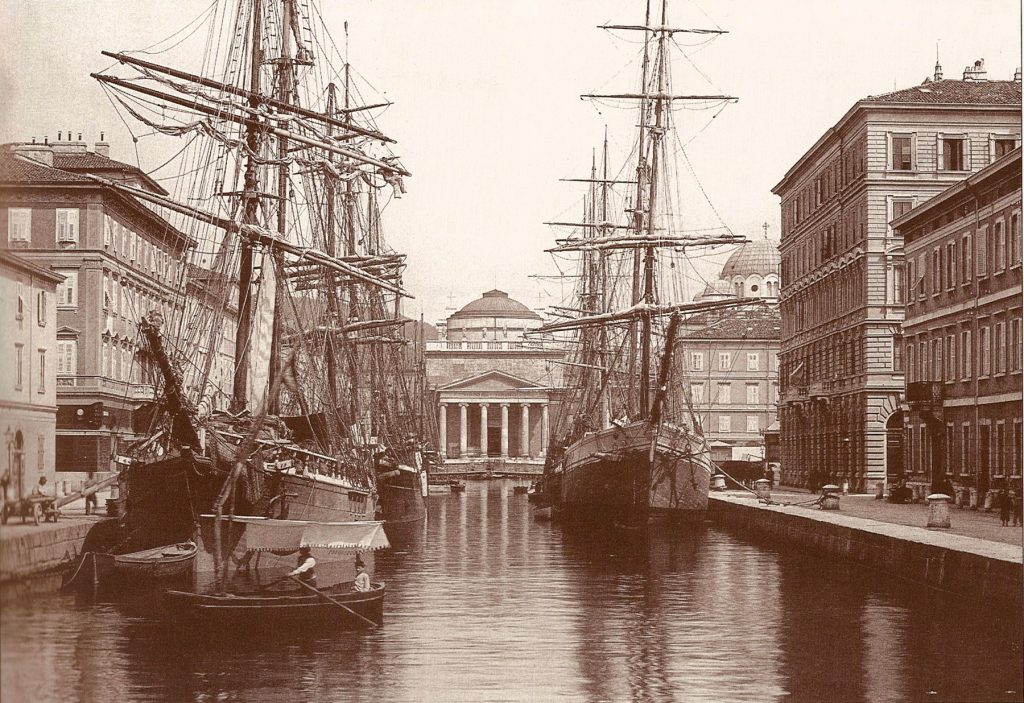
Two more minor canals were excavated. All had sturdy, walled banks to ensure the safety of the boats and to allow easier access for loading and unloading to and fro nearby warehouses.
The main business at the time was construction for the quickly expanding city, and most sailboats carried building materials. The Canal Grande was much longer than today’s – it reached the entrance to St. Antonio’s church – and it soon became a problem for the population as this pulsating commercial area of town was literally cut in two, forcing people, often carrying heavy merchandise, to take long detours to get to the other side.
In 1756 a wooden bridge was built. It opened to allow the passage of ships and there was no pedestrian lane, thus making it very difficult and dangerous for people to cross it on foot. It was painted red, and the whole area from then on became known as Ponterosso.
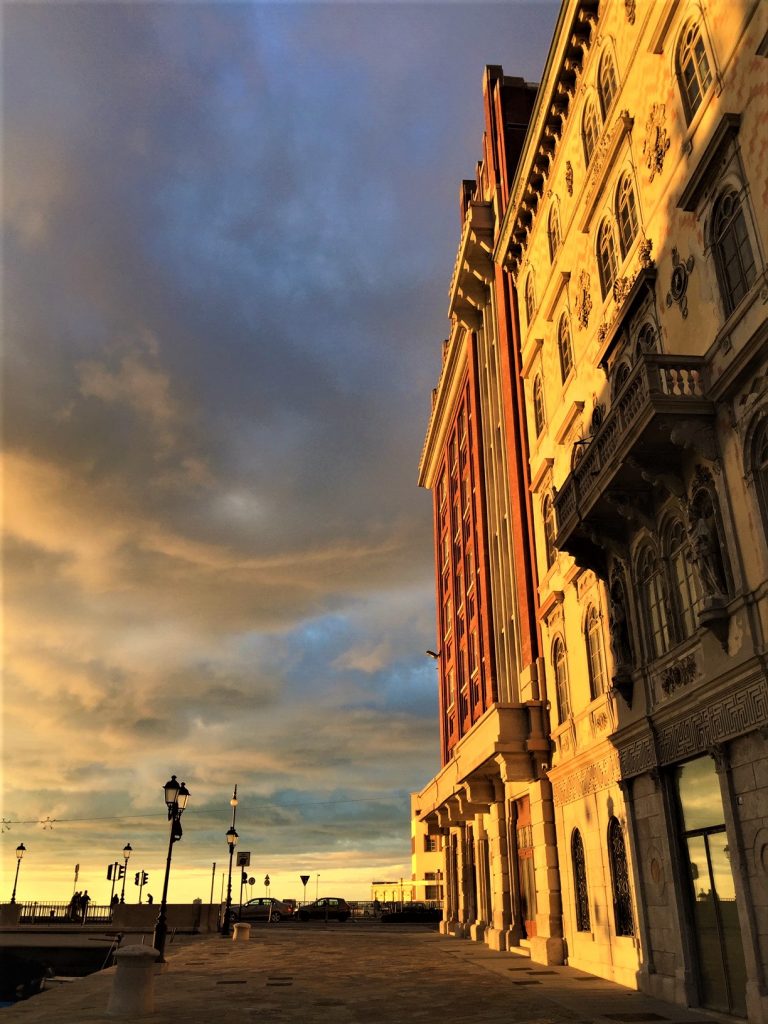
Ten years later, traffic both along the Canal and on the bridge had become so heavy that a new, metal bridge was built. It too opened for vessels. In 1925 it was eventually replaced by a fixed cement bridge.
Today, a bronze James Joyce stands in perpetual crossing on that passage. Ten years later the last part of the canal, from the bridge to the church was interred. The debris from the demolition of Cittavecchia (the old town) was used to fill the wide gap left by the waters, which later became Piazza Sant’Antonio.
These, however, were not the only bridges over Trieste’s Canal Grande. On the other side, to connect Riva Carciotti to Riva III Novembre and to the railway station (today’s Corso Cavour), a revolving iron bridge, designed by Srudthoff factory, was built in 1858. It was covered in studded metal sheets to prevent horses from slipping, and it had a pedestrian lane. It was officially called Ponte Nuovo, but became known by all as Ponte Verde because it was painted green.
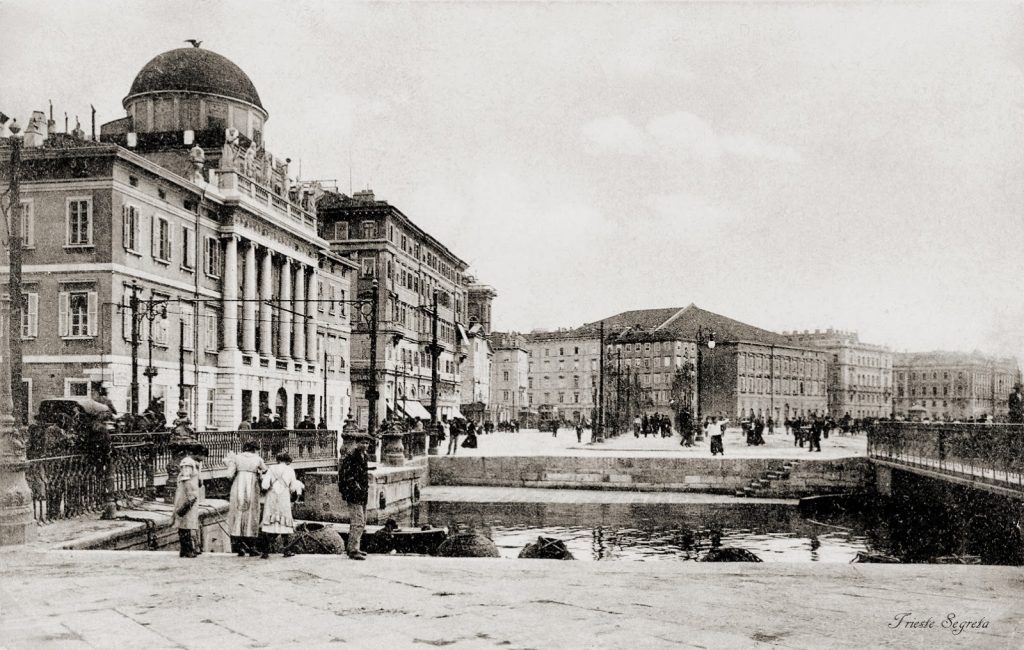
Ponte Verde opened with a loud mechanical system that required several men pushing around a metal winch kept underground to be protected from weather and sea salt. Opening times were 7 a.m. and 3 p.m. Much dreaded by carriages, openings were also common outside schedule, thus halting street traffic for several hours at a time.
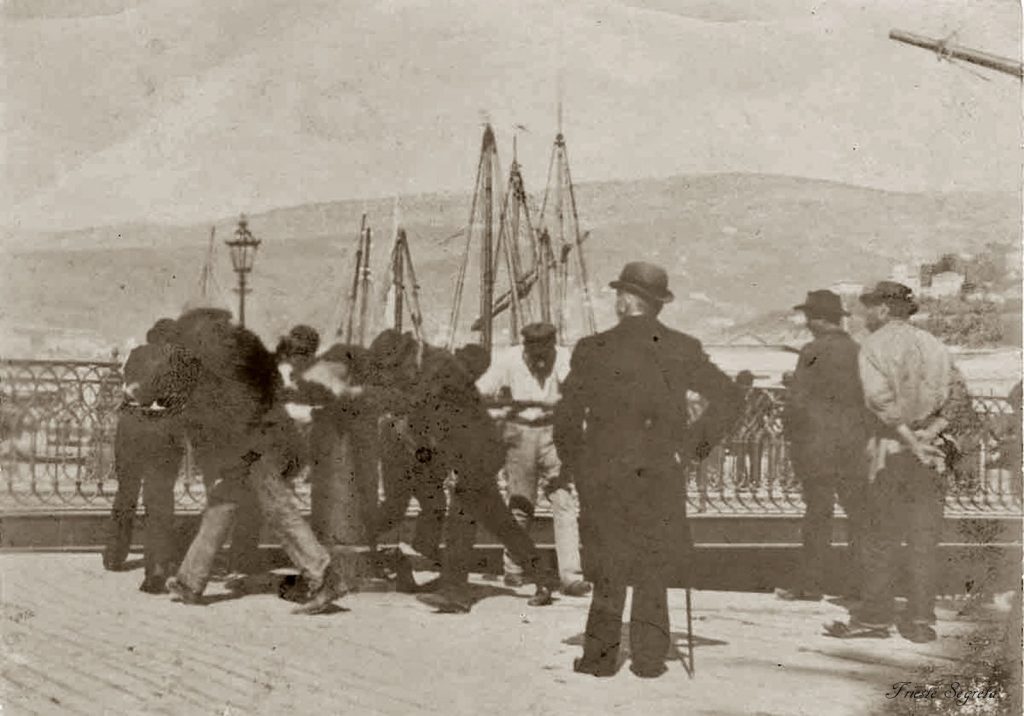
Soon, a third bridge became necessary to connect the Southern railway station (today’s main station in Piazza Libertà) to Trieste – Erpelle station, today’s much neglected Campo Marzio station at the end of Rive.
Building a new bridge was considered too expensive, so Ponte Verde was modified to stand the vibrations provoked by the passage of trains. In 1887 the new Ponte Verde came into operation. It had railway tracks for trains, railway tracks for trams, a lane for carriages and a floating pontoon for pedestrians. It was considered a marvel of industrial technology. It too had a winch and a team of 6 men to open ad close it.
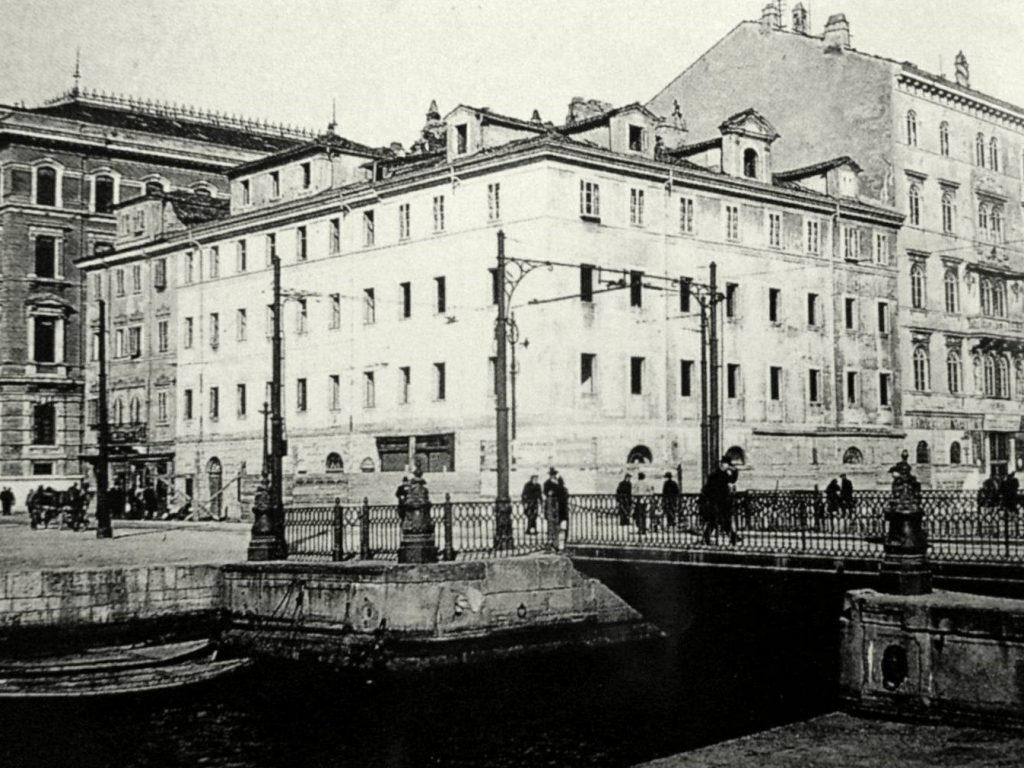
As sea commerce boomed and more and more ships crowded the Rive and the Canal, warehouses and goods covered the streets and trains, trams, carriages and pedestrians congested the Rive at all times. Sailboats docked next to apartment houses, so close that residents sometimes hung their laundry to dry on the masts of ships immediately out of their windows.
To improve circulation, thirty more meters were added to the Rive and a new rotating bridge was built next to Ponte Verde. This was named Ponte Nuovo or Bianco, once again because of its color. To help with the traffic, trains were transferred to the third bridge.

With the development of the new port, big ships began to prefer the smoother and faster uploading and downloading procedures of its decentralized warehouses. The Grand Canal quickly lost its function and the rotating bridges remained closed for increasingly longer periods of time.
In 1950 the municipality decided to eliminate the narrow passage created by Ponte Verde and Ponte Bianco between Riva III Novembre and Corso Cavour and built one, wider bridge. Hundreds of nostalgic citizens witnessed the demolition of Ponte Verde. The iconic iron bridge, with the help of trucks from the American Army (part of the Allied Government which ruled Trieste from 1945 to 1954) was carried to the outdoor museum of collector Diego de Henriquez in San Vito. His precarious financial situation, however, forced him to sell the bridge only two years later. Ponte Bianco followed the same merciless destiny. Demolished, it was given to de Henriquez, then sold.

The story of Trieste’s bridges culminated in 2013, when Mayor Dipiazza approved the project for the construction of a new pedestrian one connecting via Trento to via Cassa di Risparmio, halfway along Canal Grande.
This new addition to the city’s architecture had been greatly criticized back then by Triestini, who thought the bridge too modern for the surroundings. Today, however, people seem to enjoy its design and practical purposes. Not many people probably remember that during the years of the Allied Government, while the two bridges on the Rive were being demolished, in the same spot where Ponte Curto is today, an ugly, rusty Bailey bridge was temporary assembled to make it easier for Triestini to go from one side of the canal to the other.
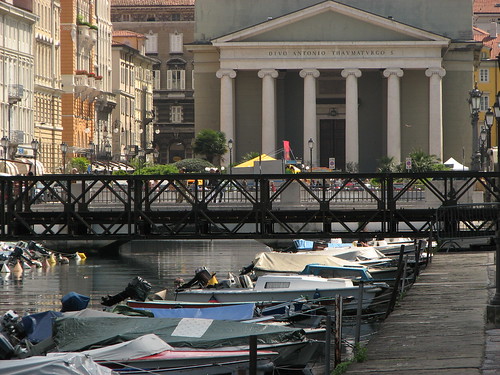
In 2008 the municipality experimented with the project of Ponte Curto by temporarily placing a military bridge, very similar to the Bailey bridge of the early 1950s, on Canal Grande. Needless to say, Triestini were extremely unhappy with the experiment.





























Bellissima storia !!!!